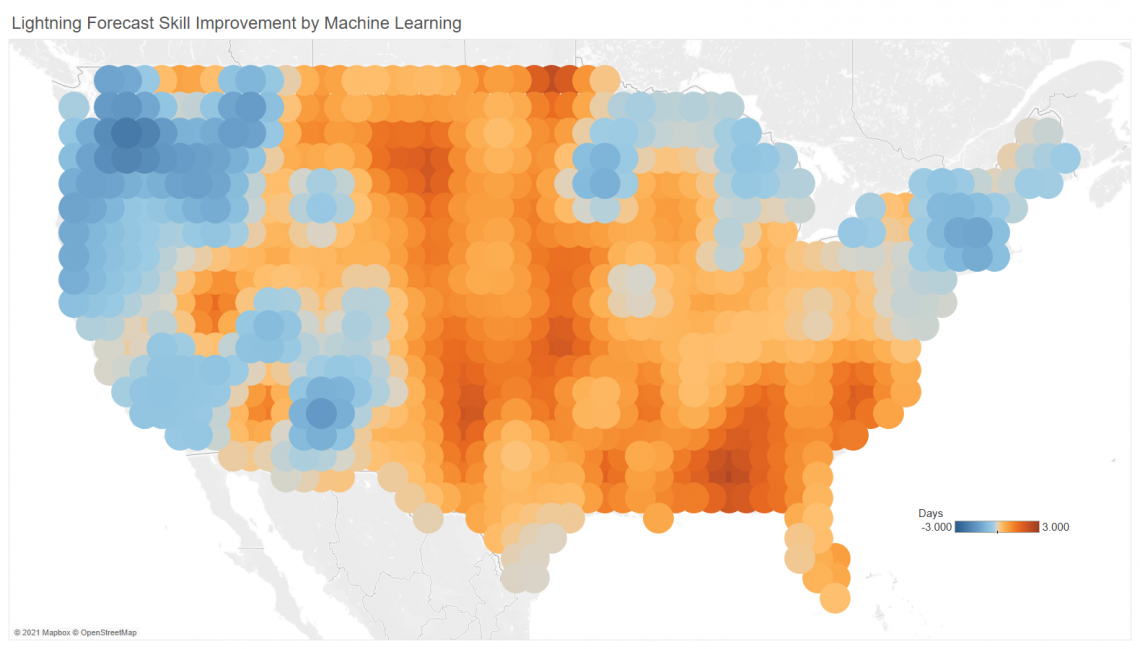A new paper says if lightning is going to strike in the same place twice, AI can show when. The technique presented Dec. 13th at the American Geophysical Union’s fall meeting combines weather forecasts with a machine learning equation based on analyses of past lightning events and can forecast lightning over the southeastern U.S. two days earlier than other methods.
Researchers trained the system with lightning data from 2010 to 2016, letting the computer discover relationships between weather variables and lightning bolts. Then they tested the technique on weather from 2017 to 2019, comparing the AI-supported technique and an existing physics-based method, using actual lightning observations to evaluate both.

A comparison of the performance of the new, AI-supported method and the existing method for U.S. lightning forecasts. The AI-supported method was able to accurately forecast lightning on average two days earlier in places like the Southeast, where lightning is common. Because the method was trained on the entire U.S., it did less well in places where lightning is less common.Daehyun Kim/University of Washington. Map by Rebecca Gourley/University of Washington
The new method was able to forecast lightning with the same skill about two days earlier than the leading technique in places, like the southeastern U.S., that get a lot of lightning. Because the method was trained on the entire U.S., its performance wasn’t as accurate for places where lightning is less common.
Commercial networks of instruments to monitor lightning now exist in the U.S., and newer geostationary satellites can monitor one area continuously from space, supplying the precise lightning data to make more machine learning possible. The machine learning was trained on lightning observations from the World Wide Lightning Location Network, a collaborative based at the UW that has tracked global lightning since 2008.






Comments